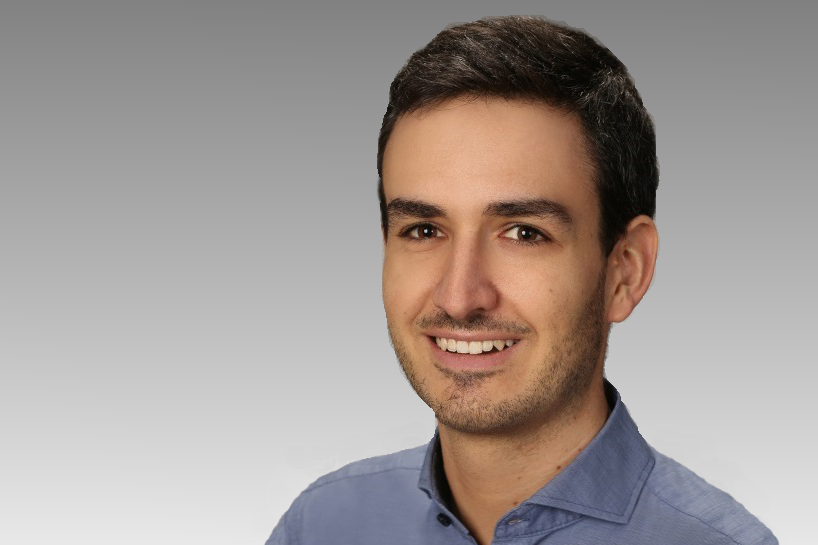Breaking the Waves
A breakthrough in ultrafast scanning probe microscopy made it possible to experimentally observe the dynamics of electrons on their intrinsic scales (femtosecond time and atomic length scale), potentially enabling the time- and space-resolved study of chemical reactions and the dynamics of photoexcited states. It is striking to note that at present there is no computational method that allows for a comparable spatio-temporal resolution with quantitative predictability. As a consequence, a detailed understanding of experiments becomes increasingly difficult because theoretical insight and support is lacking. Jan Wilhelm is developing a computational method to fill this gap. To support his work, the German Research Foundation is investing 1.8 million Euros in his Emmy Noether Independent Junior Research Group at the University of Regensburg.
 Foto: Fotostudio Daniel
Foto: Fotostudio Daniel Ultrafast Processes
Jan Wilhelm’s research interest is particularly on ultrafast processes in materials. These processes play a key role in important technological applications, such as photovoltaics. The moment light energy is converted into electrically usable energy is an ultrafast process; it happens in the millionth part of a billionth of a second. In order to analyze such ultrafast energy conversion and related processes, the early career researcher simulates how electrons behave when exposed to light. "If you want to simulate that, you have to perform billions of computing operations", Jan explains. A supercomputer is best for the job. It calculates in a few hours what would take years on an ordinary laptop. "It's time-consuming to write the software programs needed for this and to develop corresponding algorithms", Jan says, “but I am enjoying that”.
At the same time, the 32-year-old scientist is interested in the history of his subject matter. Bell Labs, a telecommunications company with a large basic research laboratory, intrigues Jan Wilhelm. "By the 1930s and 1940s, quantum mechanics offered a basic understanding of how electrons move in solids. Only this knowledge made it possible to build devices capable of performing computational operations very efficiently." At their very beginning, such computers filled up entire rooms. Today, we carry them as cell phones in our pocket.
Long-term Commitment
Why did Jan Wilhelm choose natural over social sciences? He appreciates predictability. "I always wanted to know how the world functions and how to use technologies. While physical laws are clear, it is more difficult to describe the behavior of people.” Before studying physics and mathematics in Karlsruhe, he made a detour via chemical engineering. Somehow, Jan remained committed to all those disciplines. After completing his studies, he earned a doctorate in theoretical chemistry at the University of Zurich.
Before starting at UR, he worked for two years in chemical industry. In that role, he learned that optimization processes are hard work. "In industry, it's often about constant optimization that has immediate benefits. Improvements may be small, and a lot of people have already worked on them." In university research, it's about discovering fundamental processes which potentially may help to develop new technologies. “It may take a long time until a new fundamental process is used in technology," Jan says. "As an example, take solar cells. It was discovered in the 19th century that light energy can be directly converted into electricity, and researchers have been improving the efficiency of this process since then."
The areas of application in which Jan Wilhelm's research could come into play are broad. Ultrafast electron movements could be utilized in chemistry or quantum technologies; it could be possible to use light to control chemical reactions in a targeted manner to synthesize new chemical compounds and thus develop new drugs. Or the reverse process could be used in quantum communication, i.e., electrons could be slowed down while simultaneously emitting light to transmit information very efficiently through the emitted light.
Future Endeavors
The Regensburg Center for Ultrafast Nanoscopy (RUN), which is currently being built at UR, will provide Jan Wilhelm and his colleagues with additional exciting possibilities for their research. "It will be possible to observe completely new physics that have not yet been seen in experiments. There will be the chance to work with laser pulses that have an extremely strong electric field on extremely short time scales." Jan is all smiles. "With these state-of-the-art experiments, it will be possible to investigate phenomena that are still completely unknown. If our simulations can help to suggest a new experiment or to better understand the fundamental processes experiments display, I will be more than happy."
Are there any unpredictable things fascinating Jan Wilhelm? "The sea." It's the waves that do it for him. Not somewhere out on the open sea, "they're boring there," the researcher notes, "but when waves break on the beach, that's tremendously exciting. You never know how far they'll go. Do they knock you over when you're standing in the sea? How high are they when they reach the beach?" Jan will doubtless continue to make his own waves in the world of physics. What location would Jan Wilhelm choose for long-term observation? Italy! He smiles mischievously. Why? “Scholars need to eat, too.”

